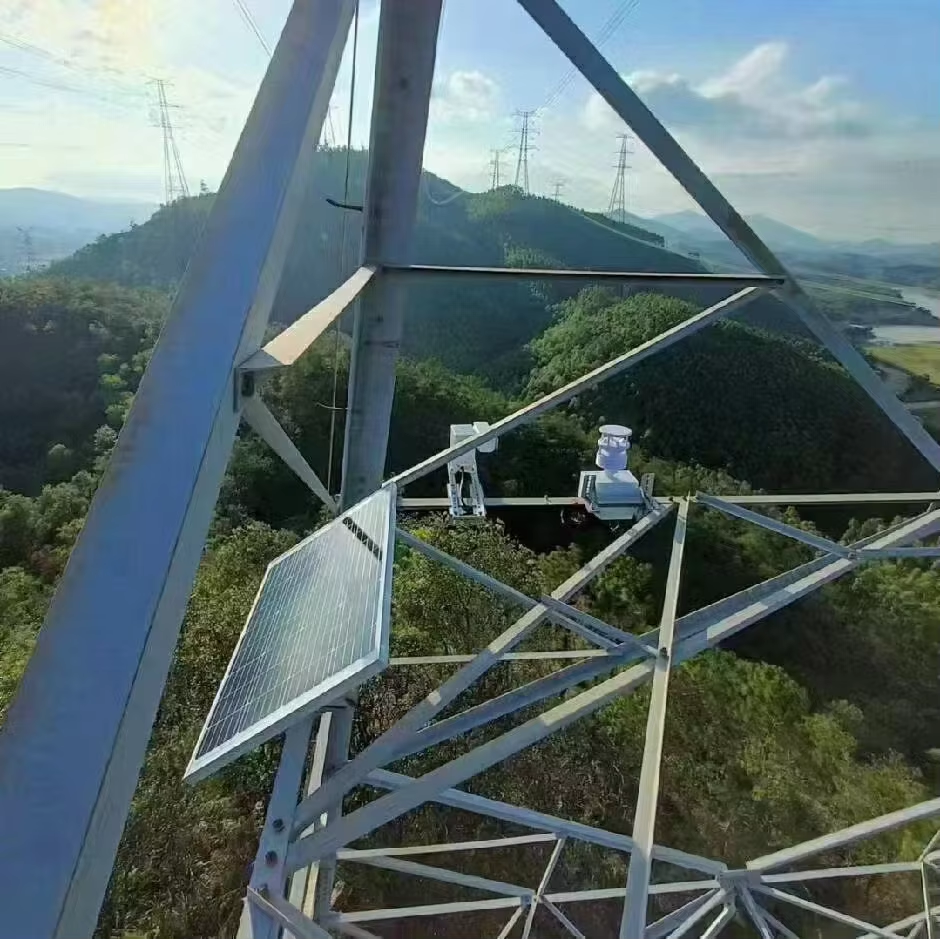With the continuous impact of the cold wave, power grids in many places are facing severe tests. The ice and snow accumulation monitoring and early warning system based on smart grid meteorological stations is playing a key role. Through real-time monitoring and precise early warning, it effectively reduces power outages caused by ice accumulation on lines, providing a strong guarantee for the safe and stable operation of the power grid.
Intelligent monitoring: Real-time grasp of the line environmental conditions
In key power transmission channels and micro-meteorological areas, smart grid meteorological stations, with their precise sensor arrays, continuously collect critical data such as temperature, humidity, wind speed, and precipitation types. When the environmental conditions approach the freezing critical point, the system will automatically activate the special monitoring mode.
“These weather stations can identify specific meteorological conditions that may cause icing on lines,” an expert from the power grid dispatching center introduced. “When the ambient temperature is between -5℃ and 2℃ and the air humidity exceeds 85%, the system will enter a state of high alert.”
Precise early warning: Issue risk alerts 48 hours in advance
Relying on advanced data analysis algorithms, the intelligent monitoring system can predict the risk of line icing 48 hours in advance. It is understood that by integrating real-time meteorological data and line operation parameters, this system can accurately predict the thickness and development trend of ice accumulation.
“The early warning information we received was very specific, including the location of the poles where ice might form, the estimated thickness of the ice and the danger level,” said the operation and maintenance director of a certain power grid company. “This provides us with a valuable time window to deploy de-icing forces in advance.”
Active defense: Multiple measures are taken to ensure power supply safety
Under the guidance of early warning information, power grid enterprises can take a variety of proactive defense measures. This includes adjusting the operation mode of the power grid, starting the DC de-icing device, and deploying mobile de-icing equipment, etc. Data shows that dozens of power outages caused by ice accumulation have been successfully avoided this winter.
“Through precise early warning and rapid response, we have successfully reduced the number of faults caused by ice accumulation by 70%,” a power system expert disclosed. “Especially in mountainous and remote areas, this monitoring system has played an irreplaceable role.”
Technological innovation: Multi-sensor fusion enhances monitoring accuracy
The new generation of smart grid weather stations adopts multi-sensor fusion technology. Besides the monitoring of conventional meteorological elements, they are also equipped with dedicated ice coverage detection sensors. These sensors directly monitor the icing condition of the lines by measuring parameters such as the inclination Angle and tension of the conductors.
“We are still testing an intelligent monitoring system based on image recognition,” said a technician from the research institution. “By analyzing the pictures sent back from the site, the system can automatically identify the thickness and type of ice cover, further enhancing the accuracy of monitoring.”
Remarkable results: Power outage incidents have been significantly reduced
Statistics show that since the full deployment of the intelligent monitoring and early warning system, the number of power outages caused by ice and snow accumulation in winter has significantly decreased. During the multiple cold waves last winter, the system successfully warned of over 90% of the ice accumulation risks, making significant contributions to maintaining the safety of the power grid.
“The previous ice disaster might have caused large-scale power outages. Now, through early warning and preparation, we can keep the impact to a minimum,” said the person in charge of the power emergency command center. “This not only ensures the power supply for people’s livelihood but also provides a stable and reliable power supply for industrial production.”
Future outlook: Moving towards intelligent early warning
With the development of artificial intelligence technology, the power grid meteorological monitoring and early warning system is evolving towards a more intelligent direction. In the future, the system will be capable of independently learning the environmental characteristics of various routes, combining historical data and real-time monitoring information to provide more accurate early warning services.
Industry experts point out that the construction of smart grid weather stations is an important measure for the power system to deal with extreme weather. With the further improvement of the monitoring network and the continuous innovation of early warning technology, the power grid’s ability to resist natural disasters will be further enhanced, providing a more reliable power guarantee for economic and social development.
For more weather station information, please contact Honde Technology Co., LTD.
WhatsApp: +86-15210548582
Email: info@hondetech.com
Company website: www.hondetechco.com
Post time: Oct-16-2025


